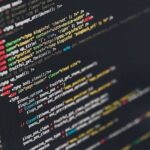The Secure Software Development Lifecycle (SSDLC) integrates security protocols at every step of software development—from the preliminary design to deployment and subsequent updates. This methodical integration ensures that security is a foundational component of the development process and not merely an afterthought. By establishing security measures early in the lifecycle, potential vulnerabilities can be identified and mitigated promptly, thereby enhancing the overall security posture of the final product.
This approach not only fortifies the software against threats but also ingrains a culture of security awareness and proactive management among the development team. It is a strategy that leading security software companies adopt to maintain the integrity and reliability of their software solutions, setting a high standard for the industry.
The Importance of Secure SDLC
In the contemporary digital landscape, where security breaches are costly and damaging, emphasizing security within the SDLC is more crucial than ever. This strategic focus allows development teams to identify and rectify vulnerabilities at an early stage, significantly reducing the likelihood of exploitation post-deployment. Secure SDLC practices lead to the development of more robust software, instill confidence among stakeholders, and ensure compliance with regulatory standards. Moreover, this proactive security integration helps in maintaining the integrity and confidentiality of user data, thereby safeguarding the organization’s reputation and trust.
A Brief Overview of SDLC Practices
The evolution from Waterfall to Agile methodologies marks a significant shift in SDLC practices. The Waterfall model, with its linear and sequential approach, has given way to Agile’s iterative and incremental model. This transition facilitates rapid development cycles, continuous integration, and regular feedback loops, which are conducive to integrating security measures more seamlessly.
Agile methodologies encourage regular assessment and adaptation of security practices, which aligns with the dynamic nature of threat landscapes. This flexibility allows teams to adapt security measures in real time, ensuring that the software remains resilient against emerging threats.
Enhancing Security Across SDLC Phases
Security integration across all phases of the SDLC is imperative for the development of secure software. Security goals are set and aligned with business objectives during the requirements phase to ensure comprehensive coverage. In the design phase, security architectures and models are meticulously crafted, incorporating encryption, authentication, and authorization protocols. Development phases emphasize the implementation of secure coding practices and regular code reviews to detect security flaws early. The verification phase involves rigorous testing strategies, including static and dynamic analysis, to validate the effectiveness of security measures implemented during earlier phases.
Key Steps to Implement Secure SDLC
- Risk Assessment: Regularly evaluate the security risks associated with each phase of the SDLC to identify potential vulnerabilities early;
- Secure Coding Practices: Implement and enforce secure coding guidelines to minimize code vulnerabilities;
- Continuous Testing: Integrate continuous security testing throughout the development process to detect and remediate vulnerabilities promptly;
- Security Training: Provide ongoing security training and awareness programs for developers to enhance their understanding of security best practices;
- Stakeholder Involvement: Ensure active participation from all stakeholders, including security teams, developers, and management, to foster a security-centric development culture.
This expanded content provides a comprehensive understanding of the Secure SDLC, highlighting its significance and detailing practical steps for implementation to ensure robust security throughout the software development lifecycle.
Best Practices from Top Security Software Developers
Top security software developers recognize that a robust Secure SDLC is not just about integrating security practices; it’s about making these practices an inherent part of the development culture. These leaders in the field leverage a combination of cutting-edge technologies, comprehensive training, and a proactive approach to security to ensure that their software is as secure as possible from inception to deployment. Below are some of the best practices adopted by these top developers to maintain and enhance the security integrity of their software products:
- Proactive Vulnerability Management: Early and frequent scanning for vulnerabilities allows for the timely identification and mitigation of potential security threats. Top security software developers implement automated tools to continuously monitor and analyze the security state of their software;
- DevSecOps Integration: By integrating security as a core aspect of the development and operations process, these developers ensure that security consideration is continuous and not a standalone phase. This integration speeds up the development cycle while maintaining high security standards;
- Advanced Encryption Techniques: Utilizing state-of-the-art encryption methods to protect data integrity and confidentiality is a hallmark of top security software developers. This practice is critical in defending against data breaches and other cyber threats;
- Regular Security Audits: Conducting comprehensive security audits regularly helps in assessing the effectiveness of the implemented security measures. These audits are crucial for identifying security gaps and refining the security strategies accordingly;
- Security-by-Design: This approach ensures that security is considered at every stage of the software development process. It involves defining security requirements from the outset and designing systems to meet these requirements effectively;
- User Access Control: Implementing stringent access controls and ensuring that users have the minimum necessary privileges reduces the risk of unauthorized access and data leaks.
Adopting these practices not only enhances the security of the software but also builds trust with users and clients by demonstrating a commitment to safeguarding data and systems. Top security software developers understand that in today’s digital age, robust security measures are a key competitive advantage. For security software companies, this commitment is crucial in establishing themselves as reliable and trustworthy providers in a market where digital security is paramount. Their proactive approach in adopting such practices distinguishes them from competitors and instills confidence among stakeholders.
Best Practices from Top Security Software Developers
Top security software developers recognize that a robust Secure SDLC is not just about integrating security practices; it’s about making these practices an inherent part of the development culture. These leaders in the field leverage a combination of cutting-edge technologies, comprehensive training, and a proactive approach to security to ensure that their software is as secure as possible from inception to deployment. Below are some of the best practices adopted by these top developers to maintain and enhance the security integrity of their software products:
- Proactive Vulnerability Management: Early and frequent scanning for vulnerabilities allows for the timely identification and mitigation of potential security threats. Top security software developers implement automated tools to continuously monitor and analyze the security state of their software;
- DevSecOps Integration: By integrating security as a core aspect of the development and operations process, these developers ensure that security consideration is continuous and not a standalone phase. This integration speeds up the development cycle while maintaining high security standards;
- Advanced Encryption Techniques: Utilizing state-of-the-art encryption methods to protect data integrity and confidentiality is a hallmark of top security software developers. This practice is critical in defending against data breaches and other cyber threats;
- Regular Security Audits: Conducting comprehensive security audits regularly helps in assessing the effectiveness of the implemented security measures. These audits are crucial for identifying security gaps and refining the security strategies accordingly;
- Security-by-Design: This approach ensures that security is considered at every stage of the software development process. It involves defining security requirements from the outset and designing systems to meet these requirements effectively;
- User Access Control: Implementing stringent access controls and ensuring that users have the minimum necessary privileges reduces the risk of unauthorized access and data leaks.
Adopting these practices not only enhances the security of the software but also builds trust with users and clients by demonstrating a commitment to safeguarding data and systems. Top security software developers understand that in today’s digital age, robust security measures are a key competitive advantage.
Conclusion
Embracing a Secure SDLC is indispensable for minimizing security risks in software development. This holistic approach ensures that every phase of the development process is imbued with robust security measures, thereby producing functional and secure software against potential threats. Security software companies that adopt SDLC are better positioned to protect their assets, maintain customer trust, and achieve business continuity. Their commitment to rigorous security practices sets a standard for the industry, demonstrating the value of integrating security throughout the software development lifecycle.






Comments are closed